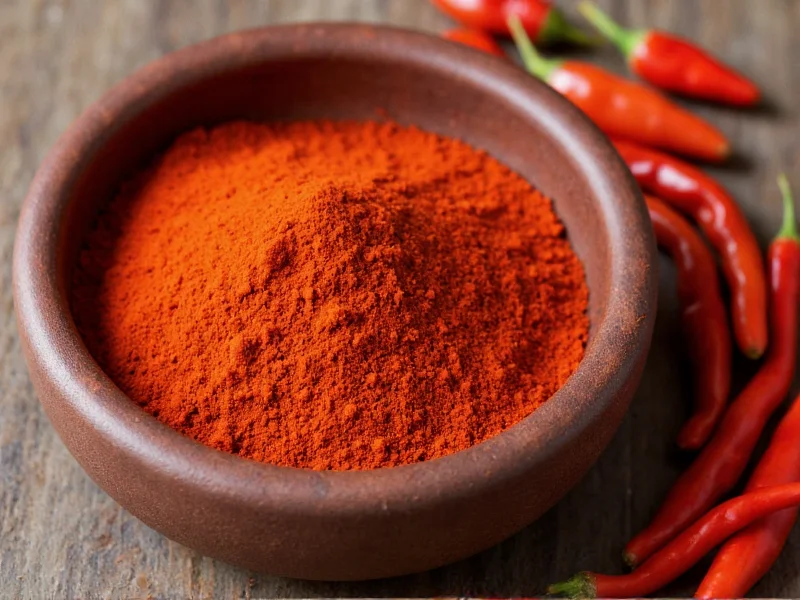When exploring is paprika the same as smoked paprika, the answer is clear: these spices serve different culinary purposes despite their similar base ingredients. Both originate from Capsicum annuum peppers, but their production methods create distinct flavor profiles that impact how they perform in recipes.
Understanding Paprika Varieties
Regular paprika, sometimes called sweet paprika, is produced by drying and grinding sweet red peppers. The process preserves the natural sweetness and vibrant red color without introducing additional flavor elements. In contrast, smoked paprika (or pimentón) involves smoking the peppers over wood fires before grinding, which infuses the spice with a characteristic smoky aroma and taste.
| Characteristic | Regular Paprika | Smoked Paprika |
|---|---|---|
| Production Method | Air-dried peppers ground into powder | Peppers smoked over wood fires before grinding |
| Flavor Profile | Sweet, mild, slightly peppery | Distinct smoky flavor with varying heat levels |
| Color | Bright red | Deep red to mahogany |
| Common Culinary Uses | Coloring agent, mild flavor enhancement | Adding smoky depth to dishes without actual smoking |
Flavor Differences and Culinary Applications
The fundamental difference between paprika and smoked paprika lies in their flavor impact. Regular paprika primarily contributes color and a subtle pepper flavor, making it ideal for dishes where you want visual appeal without overwhelming taste. Smoked paprika, however, delivers a pronounced smoky dimension that can transform simple recipes.
When considering can I substitute paprika for smoked paprika, the answer depends on your recipe's requirements. In dishes where smoke flavor is essential (like traditional Spanish chorizo or paella), substitution would significantly alter the intended taste. However, for recipes using paprika mainly for color (such as deviled eggs or potato salad), regular paprika works perfectly.
Types of Smoked Paprika
Smoked paprika comes in three main varieties, each with different heat levels:
- Pimentón Dulce (sweet): Mild and purely smoky without heat
- Pimentón Agridulce (bittersweet): Medium heat with complex flavor
- Pimentón Picante (spicy): Noticeable heat along with smokiness
Understanding these variations helps address the common question about what is the flavor difference between paprika types. The sweet variety works well in tomato-based sauces, while the spicy version enhances meat rubs and stews.
Practical Substitution Guidelines
When you need to substitute smoked paprika for regular paprika (or vice versa), consider these practical ratios:
| Substitution Needed | Ratio | Additional Ingredients for Best Results |
|---|---|---|
| Smoked for regular | 1:1 but use half amount | Add pinch of cayenne if recipe needs more heat |
| Regular for smoked | 1:1 | Add 1/8 tsp liquid smoke OR 1/4 tsp chipotle powder per tsp paprika |
These ratios address the practical concern of paprika vs smoked paprika in recipes while maintaining flavor balance. Remember that smoked paprika's intensity means you often need less than regular paprika to achieve the desired effect.
Storage and Shelf Life
Both paprika varieties lose potency over time, but smoked paprika generally maintains its distinctive flavor longer due to the smoking process. Store both in airtight containers away from light and heat. Properly stored:
- Regular paprika: 1-2 years for optimal flavor
- Smoked paprika: 2-3 years due to the preservative effect of smoking
Fresh paprika should have a vibrant color and strong aroma. If your spice has faded color or little scent, it's time for replacement regardless of the expiration date.
Regional Variations and Quality Indicators
Authentic Spanish smoked paprika (Pimentón de la Vera) carries a Denomination of Origin certification, guaranteeing traditional production methods. Hungarian paprika, meanwhile, is typically non-smoked and comes in multiple heat levels from sweet to hot.
When evaluating is paprika the same as smoked paprika in terms of quality, check for:
- Deep, consistent color (no fading or mottling)
- Strong, characteristic aroma when opened
- Powder that flows freely without clumping
- Origin information on the packaging
Recipe Applications
Certain dishes specifically require one type over the other:
- Use regular paprika for: Hungarian goulash, deviled eggs, potato salad, cheese spreads
- Use smoked paprika for: Spanish paella, chorizo, barbecue rubs, roasted vegetables, bean dishes
Understanding these specific applications helps answer the practical question about substituting smoked paprika for regular paprika in your cooking. While substitution is possible in some cases, authentic recipes often depend on the specific paprika type for their characteristic flavor.











 浙公网安备
33010002000092号
浙公网安备
33010002000092号 浙B2-20120091-4
浙B2-20120091-4